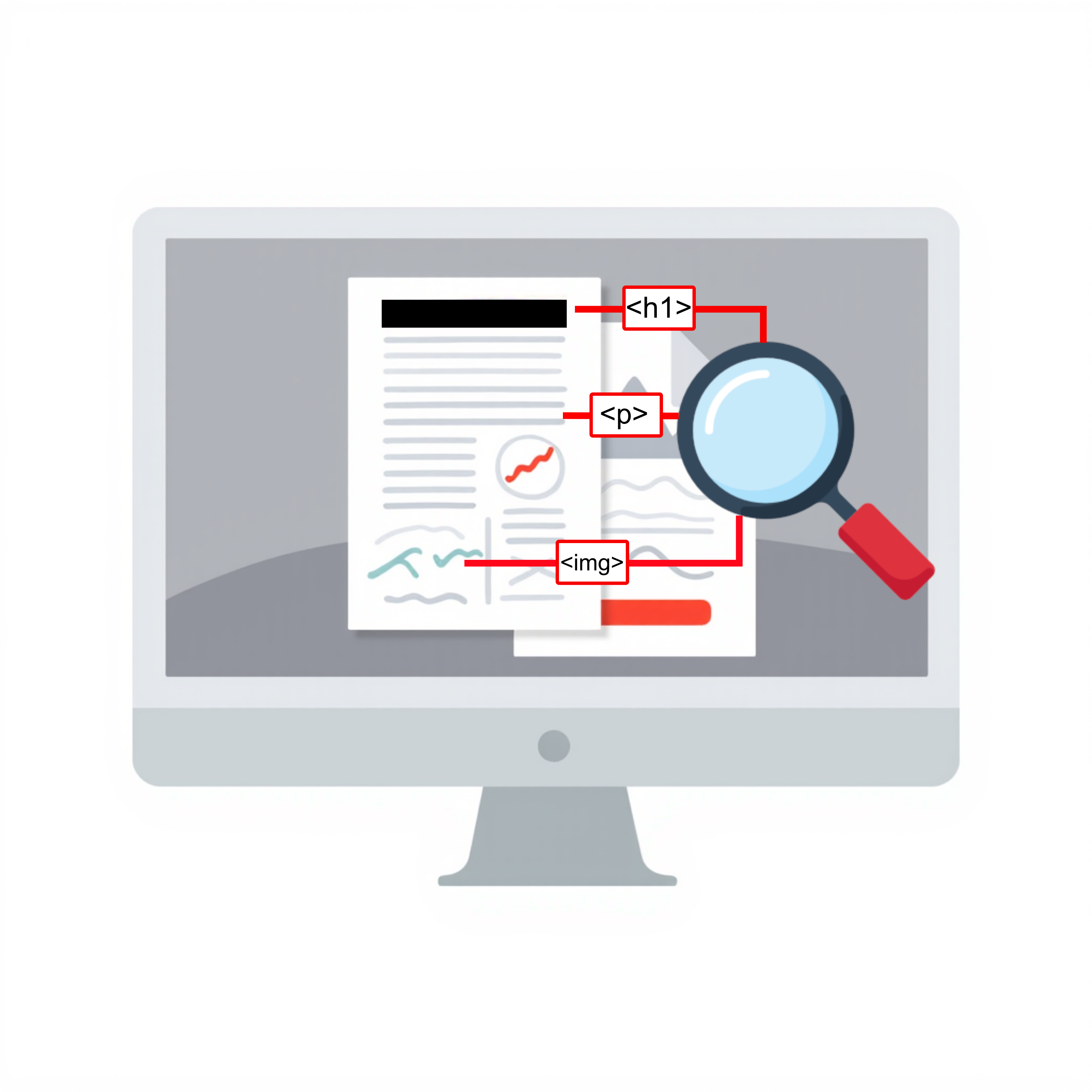Introduction
The Web Content Accessibility Guidelines (WCAG) play a pivotal role in shaping the internet as a more inclusive and accessible space for everyone, regardless of their abilities. As digital interactions become increasingly integral to our daily lives, ensuring that web content is accessible to all users is not just a regulatory requirement but a moral imperative. This blog post will provide a brief introduction to WCAG, including its history, key updates, and the fundamental principles that guide its framework. We will also explore the goals of WCAG, focusing on how it strives to create a universally accessible web.
The History and Evolution of WCAG
Why WCAG Was Needed
The internet revolutionized how we access information, communicate, and conduct business. However, as the web grew, it became apparent that many websites were not accessible to people with disabilities. This lack of accessibility created significant barriers, preventing individuals from fully participating in the digital world. To address these challenges, the need for standardized accessibility guidelines became evident, leading to the creation of WCAG.
The First Publication
The first version of WCAG, WCAG 1.0, was published by the World Wide Web Consortium (W3C) in May 1999. This initial set of guidelines aimed to provide a framework for web developers to make content accessible to people with disabilities. WCAG 1.0 introduced several key concepts and techniques to improve web accessibility, setting the foundation for future developments.
Subsequent Updates and Latest Versions
As technology evolved, so did the need for updated accessibility guidelines. In December 2008, WCAG 2.0 was released, offering a more comprehensive and technology-neutral set of guidelines. This version expanded on the principles of WCAG 1.0, providing a robust framework applicable to various web technologies.
The most recent updates, WCAG 2.1 and WCAG 2.2, continue to build upon this foundation, addressing new challenges and incorporating additional success criteria to enhance accessibility for all users.
Key Updates in WCAG 2.1
WCAG 2.1, published in June 2018, introduced 17 new success criteria to address gaps identified in WCAG 2.0. These updates are designed to enhance accessibility in three key areas:
- Mobile Accessibility: Recognizing the growing use of mobile devices, WCAG 2.1 includes criteria that ensure content is accessible on smaller screens and touch interfaces.
- Low Vision: New criteria provide better support for individuals with low vision, ensuring that content is perceivable and operable without relying solely on visual cues.
- Cognitive and Learning Disabilities: WCAG 2.1 introduces guidelines to make content more understandable and navigable for users with cognitive and learning disabilities.
Key Updates in WCAG 2.2
The latest version, WCAG 2.2, was published October 2023. It builds upon WCAG 2.1 with additional success criteria aimed at further enhancing accessibility. While the full details are still being finalized, some anticipated updates include:
- Focus Appearance: Improved visibility of focus indicators to help users navigate more easily.
- Dragging Movements: Ensuring functionality can be operated without dragging movements, benefiting users with mobility impairments.
- Findable Help: Ensuring help mechanisms are easy to locate and access.
- Target Size: Minimum target size for interactive elements to enhance usability for users with motor impairments.
These updates reflect ongoing efforts to address emerging accessibility challenges and improve the inclusivity of web content.
The Four Principles of WCAG
WCAG is built upon four core principles that provide a comprehensive framework for web accessibility. These principles, often abbreviated as POUR, are:
- Perceivable: Information and user interface components must be presented in ways that users can perceive. This principle ensures that content is available through different sensory modalities, such as sight, sound, and touch.
- Operable: User interface components and navigation must be operable. This means that users should be able to interact with all controls and navigate the content regardless of their physical abilities.
- Understandable: Information and the operation of the user interface must be understandable. This principle ensures that content is clear and comprehensible, allowing users to easily grasp information and interact with the website.
- Robust: Content must be robust enough to be interpreted reliably by a wide variety of user agents, including assistive technologies. This principle focuses on the adaptability of content to different technologies and user needs.
Goals of WCAG
The ultimate goal of WCAG is to create a web that is accessible to everyone, regardless of their abilities. By adhering to the four principles of WCAG, web developers and content creators can ensure that their websites are inclusive and user-friendly. Let’s explore how each principle guides the goals of WCAG.
Perceivable
The perceivable principle aims to make content available through various sensory modalities. This includes providing text alternatives for non-text content, ensuring that multimedia is accessible through captions and audio descriptions, and making content adaptable to different display settings. By focusing on perceivability, WCAG aims to eliminate sensory barriers, ensuring that all users can access information.
Operable
The operable principle ensures that users can interact with and navigate web content. This involves making all functionality available via keyboard, providing sufficient time for users to read and interact with content, and designing interfaces that do not cause seizures. By prioritizing operability, WCAG helps create a web that is usable by individuals with diverse physical abilities.
Understandable
The understandable principle focuses on making content clear and predictable. This includes using readable text, providing consistent navigation, and helping users avoid and correct mistakes. By ensuring understandability, WCAG aims to make the web more intuitive and easier to use for everyone, including those with cognitive and learning disabilities.
Robust
The robust principle emphasizes the need for content to be compatible with various technologies and user agents, including assistive technologies. This involves using web standards and ensuring that content remains accessible as technologies evolve. By focusing on robustness, WCAG promotes the creation of future-proof websites that remain accessible over time.
WCAG and Its Relationship to National and International Laws
WCAG serves as a critical reference point for national and international accessibility laws, ensuring that digital content is accessible to all users. Various countries have adopted WCAG as the standard for web accessibility compliance, integrating these guidelines into their legal frameworks.
United States
In the United States, WCAG is referenced in several key regulations, including Section 508 of the Rehabilitation Act and the Americans with Disabilities Act (ADA). These laws require federal agencies and organizations receiving federal funding to adhere to WCAG standards to ensure accessibility for individuals with disabilities.
European Union
The European Union has also adopted WCAG as part of its web accessibility directive, which mandates that public sector websites and mobile applications comply with WCAG 2.1 Level AA. This directive aims to provide a consistent and high level of accessibility across EU member states, ensuring that digital content is accessible to all citizens.
Other International Adoption
Countries such as Canada, Australia, and Japan have similarly integrated WCAG into their national accessibility standards. These global efforts highlight the widespread recognition of WCAG as the benchmark for digital accessibility, promoting a more inclusive web worldwide.
Conclusion
The Web Content Accessibility Guidelines (WCAG) provide a vital framework for creating an inclusive and accessible web. By understanding the history, principles, and goals of WCAG, web developers and content creators can ensure that their digital content is accessible to everyone, regardless of their abilities.
At AFixt, we specialize in ensuring that websites, software, mobile apps, and kiosks are accessible. If you would like to learn more about how WCAG impacts your digital resources and how we can help you achieve compliance, please contact us at [Your Contact Information]. Together, we can make the web a more inclusive place for all users and help your organization meet its accessibility goals.
Reach out to us today to start making your digital presence more accessible and compliant with the latest standards and regulations.







